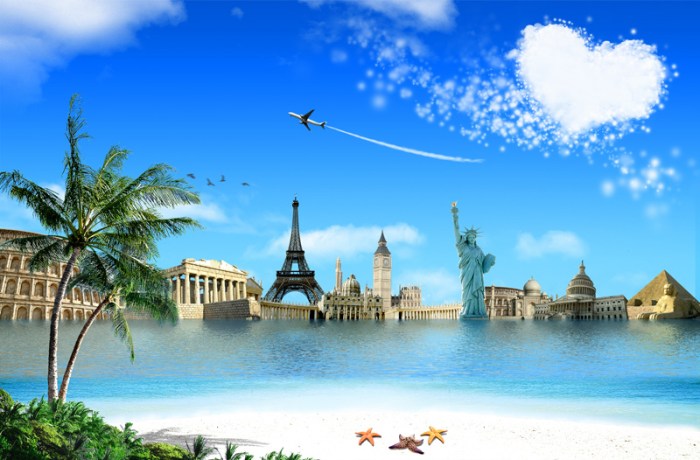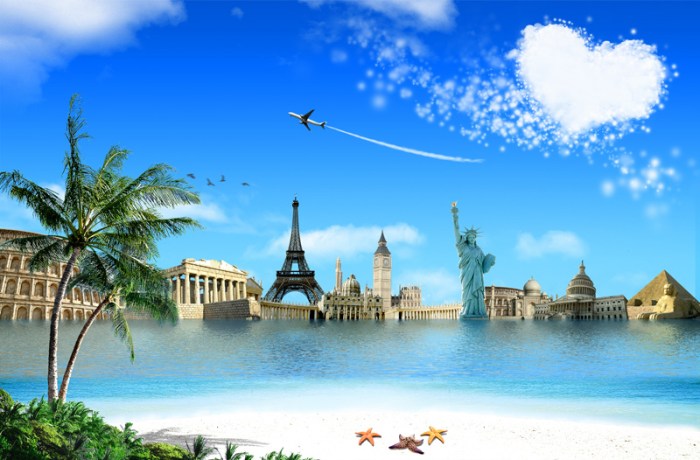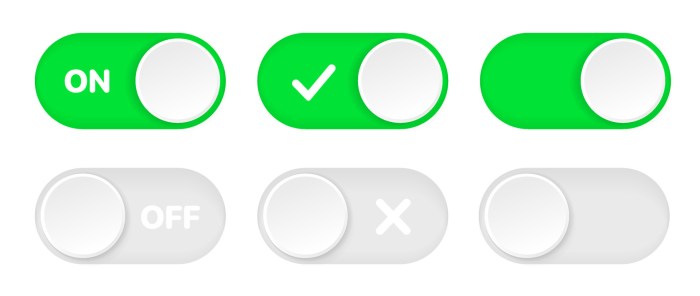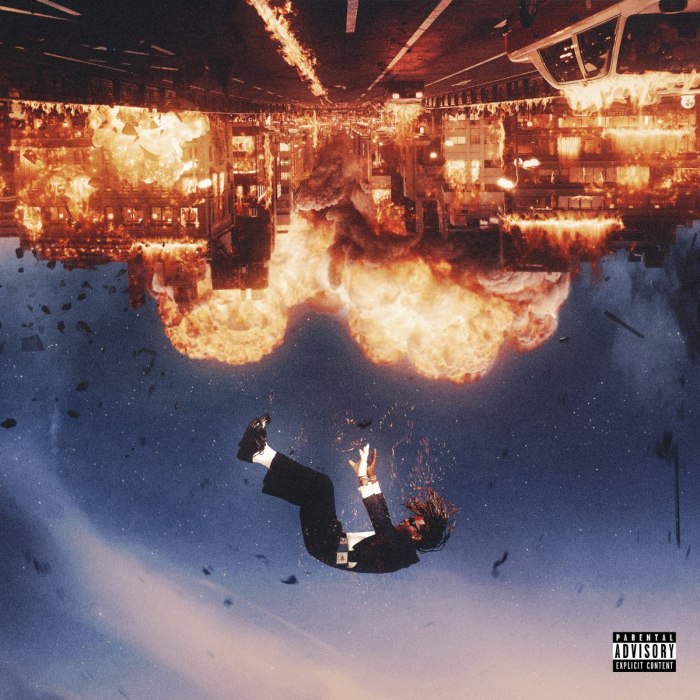Travel tips best time to visit is crucial for a fantastic trip. Knowing the ideal time to travel can significantly impact your experience, from weather conditions to crowds and local events. Different destinations have optimal seasons, and understanding these nuances can make your journey more enjoyable and affordable. Factors like budget, desired activities, and personal preferences play a vital role in determining the perfect travel timing.
This guide delves into the intricacies of choosing the best time to visit specific destinations. We’ll explore the impact of weather patterns, local events, and budget considerations, ultimately empowering you to plan a trip that aligns with your needs and desires. Whether you dream of sun-drenched beaches or snowy mountains, this guide will provide the insights you need.
Introduction to Travel Timing
Choosing the right time to travel can significantly impact your overall experience. It’s not just about the weather; it’s about balancing crowds, costs, and the unique atmosphere of your destination. Understanding the ideal travel period for various locations can save you money, stress, and ensure you have the best possible trip.Factors such as weather patterns, local events, and even the time of year can greatly influence your enjoyment of a destination.
The best time to visit often depends on the specific location and what you hope to experience. For instance, a bustling city in the summer might be overwhelming for some, while a remote mountain region in winter could be ideal for snow sports enthusiasts.
Factors Influencing Ideal Travel Periods
Understanding the factors influencing ideal travel periods is crucial for making informed decisions. Different destinations have varying climates and attractions that peak at different times of the year. Consider the following:
- Weather patterns: Temperature, rainfall, and sunshine play a significant role in travel experiences. A tropical beach destination will be more enjoyable during the dry season, while a snowy mountain resort might only be accessible and appealing in winter. For example, visiting the Galapagos Islands during the wet season could result in unpredictable weather, affecting wildlife viewing and potentially causing delays or cancellations of tours.
- Crowds and Costs: Peak seasons, typically summer months or holidays, usually mean higher prices and more tourists. Visiting during the off-season often leads to lower costs, fewer crowds, and a more peaceful travel experience. For example, a trip to Rome during the shoulder season (spring or fall) might offer better deals on accommodations and tours compared to peak summer.
- Local Events and Festivals: Many destinations host unique festivals and events throughout the year. Visiting during these times can add cultural richness to your trip. For example, the Edinburgh Festival Fringe in Scotland attracts tourists from around the world to enjoy the performing arts, making it a popular time to visit.
Impact of Weather Patterns on Travel Experiences
Weather conditions significantly influence travel experiences, especially in outdoor activities or destinations that rely on specific weather patterns. The temperature, precipitation, and sunlight exposure can all impact your enjoyment of the destination. A rainy season in a rainforest might make hiking challenging, while a scorching summer in the desert could make outdoor activities unbearable.
Examples of Destinations and Their Ideal Seasons, Travel tips best time to visit
Different destinations offer the best experiences during different times of the year. Consider the following examples:
- Bali, Indonesia: The dry season (April to October) is generally the best time to visit for pleasant weather and fewer crowds.
- Kyoto, Japan: Spring (April to May) offers beautiful cherry blossom displays, while autumn (September to November) provides stunning foliage.
- The Alps, Europe: Winter (December to March) is the ideal time for skiing and snowboarding, while summer (June to September) is perfect for hiking and enjoying the alpine meadows.
Peak vs. Off-Peak Travel
A comparison of peak and off-peak travel highlights the differences in experience and costs.
| Factor | Peak Season | Off-Peak Season |
|---|---|---|
| Crowds | High | Low |
| Accommodation Costs | High | Low |
| Travel Costs | High | Low |
| Activities Availability | High | High, but potentially with limited options |
| Weather | Potentially ideal, or potentially less ideal | Potentially less ideal, or potentially ideal |
| Atmosphere | Busier, more touristy | Quieter, more local |
Destination-Specific Recommendations
Planning a trip involves more than just choosing a destination; understanding the ideal time to visit significantly enhances the experience. This section delves into the best travel times for popular destinations, considering local events, weather patterns, and the activities each location offers. From the vibrant beaches of Bali to the iconic landmarks of Paris, the optimal time to visit varies greatly depending on your interests.The best time to visit a destination hinges on several factors.
The weather, the crowds, and local events all play a role. For instance, visiting Paris during the summer means navigating large crowds but also enjoying the pleasant weather. Understanding these nuances allows you to tailor your trip to your preferences, whether you seek tranquility or excitement.
Bali: Beach Bliss or Crowded Coast?
Bali’s stunning beaches and vibrant culture draw visitors year-round. However, the best time to visit for beach lovers and those seeking a relaxed atmosphere is generally during the dry season, from April to October. This period offers consistently sunny skies and calm seas, ideal for swimming, sunbathing, and water sports. Conversely, the wet season, November to March, brings heavy rainfall and potential for flooding.
While less crowded, it can impact some activities.
Paris: Springtime Charm or Summer Bustle?
Paris, with its iconic landmarks and rich history, is a year-round destination. However, spring (April-May) and fall (September-October) offer a delightful balance of pleasant weather and fewer crowds compared to the peak summer months. The spring blossoms and autumn leaves create a picturesque backdrop for exploring the city. Summer, while offering warm days, often means navigating larger crowds.
Rome: Ancient Wonders and Crowded Squares
Rome, with its ancient ruins and historical sights, can be enjoyed year-round. The shoulder seasons (spring and fall) provide a good compromise. Spring’s pleasant weather and fewer crowds make it a popular choice, while fall offers similar benefits with the added charm of autumnal colours. Summer brings the most tourists, but the heat can be intense, impacting the enjoyment of outdoor activities.
Skiing Destinations: Powder Days and Peak Seasons
Skiing destinations, such as the Alps or the Rockies, are most enjoyable during the winter months, when snowfall creates perfect conditions for downhill skiing and snowboarding. The peak season, usually December to March, sees the highest number of visitors and often the highest prices. Choosing a slightly earlier or later date can mean fewer crowds and potentially better deals.
Consider researching specific resorts to understand their snowfall patterns and optimal times for optimal conditions.
Beach Destinations: Sunshine and Serenity
Beach destinations, like the Caribbean islands or the Mediterranean coast, typically offer the best weather for swimming and sunbathing during the summer months. However, the ideal time to visit can vary. Some destinations experience a shoulder season with pleasant temperatures and fewer crowds. Factors like local festivals and events should be considered, as these can impact the overall atmosphere and crowd levels.
Impact of Local Events and Festivals
Local events and festivals can significantly influence the best time to visit a destination. For example, the Carnival in Rio de Janeiro attracts tourists from around the world, but it also increases the cost of accommodation and transportation during this time. Researching local events relevant to your travel dates can help you plan your trip around these festivities or avoid them if you prefer a quieter experience.
Weather Patterns and Activities
Weather patterns significantly affect activities in different destinations. For instance, rainy seasons in Southeast Asia can disrupt outdoor activities. Similarly, extreme heat in the summer can make sightseeing in cities like Rome challenging. Researching the typical weather patterns for your chosen destination can help you pack appropriately and plan your activities accordingly. The data collected from various sources can be used to make informed decisions.
Budget Considerations

Travel budgets are often directly tied to the timing of your trip. Understanding this correlation is crucial for maximizing your experience while minimizing financial strain. Choosing the right travel season can significantly impact the cost of flights, accommodation, and activities, allowing you to stretch your budget further.Travel timing is a significant factor in shaping your budget. Peak seasons, typically characterized by high demand, often translate to inflated prices for flights, accommodation, and activities.
Conversely, off-peak seasons offer opportunities for significant savings, allowing you to enjoy the same destinations at a more affordable price.
Peak Season Budget Impacts
Peak seasons, such as summer holidays and school breaks, are times of high demand. This translates to higher prices across the board for flights, accommodation, and activities. Consider how this increase in prices affects your budget. For instance, a family trip to Disney World during the summer months will likely cost significantly more than a trip during the off-season.
This increase in prices is due to the increased demand from tourists and local events.
Off-Peak Season Savings
Off-peak seasons, such as shoulder seasons or the winter months, offer considerable savings potential. During these times, demand is lower, leading to reduced prices for flights, accommodation, and activities. This presents an excellent opportunity to experience destinations at a more affordable price. For example, a trip to Europe during the shoulder season will likely offer lower prices for flights and hotels compared to a trip during the peak summer months.
Finding Affordable Options in Peak Seasons
Finding affordable travel options during peak seasons requires some strategic planning. Flexibility in travel dates can make a significant difference. Consider traveling on weekdays instead of weekends, or slightly adjusting your travel dates. Also, explore alternative accommodation options, such as hostels or guesthouses, which often provide more affordable rates than traditional hotels. Furthermore, consider utilizing travel aggregator websites and comparison tools to find the best deals on flights and accommodation.
Last-minute deals and discounts are also frequently available.
Maximizing Savings During Travel
Maximizing savings while traveling involves a combination of smart choices and proactive planning. Consider utilizing budget-friendly transportation options like public transport or walking. Eating at local eateries and street food vendors can often be significantly cheaper than dining in restaurants. Taking advantage of free activities like exploring parks or visiting local museums can further reduce your expenses.
Planning your Cape Town trip? Beyond the stunning scenery, knowing the best time to visit is key for a fantastic experience. But also, exploring the vibrant neighborhoods like best neighborhoods in cape town is crucial for immersing yourself in the local culture. Ultimately, choosing the perfect time to visit depends on your tolerance for crowds and your preferred weather conditions.
So, do your research and pack accordingly!
By making informed choices and actively seeking out affordable options, you can greatly enhance your travel budget.
Average Costs by Destination and Time of Year
| Destination | Peak Season (Average Flight Cost) | Peak Season (Average Accommodation Cost) | Off-Peak Season (Average Flight Cost) | Off-Peak Season (Average Accommodation Cost) |
|---|---|---|---|---|
| Paris, France | $800 | $200 | $500 | $100 |
| Rome, Italy | $750 | $150 | $450 | $75 |
| Bali, Indonesia | $600 | $100 | $300 | $50 |
| New York City, USA | $500 | $250 | $350 | $150 |
Note: Prices are estimates and can vary depending on specific travel dates, booking time, and accommodation type.
Planning your trip? Knowing the best time to visit is key, but equally important is ensuring a smooth journey for everyone. For example, researching the best airline for wheelchair accessibility analysis is vital if you or someone you’re traveling with has mobility needs. This analysis will help you find airlines with top-notch wheelchair accessibility features, ensuring a stress-free travel experience.
Ultimately, the best time to visit will still depend on your personal preferences, but careful planning like this is key to any trip.
Travel Experiences and Activities
Planning your trip involves more than just choosing a destination and dates. Understanding how the time of year affects your travel experience, from weather conditions to local events, is crucial for maximizing your enjoyment. The ideal time to visit a place often depends on the specific activities you want to pursue.The best time to visit a destination is highly dependent on the desired experiences.
Different seasons offer unique advantages, and choosing the right time can transform a trip from satisfactory to extraordinary. This section will delve into how travel timing impacts specific experiences, including weather’s influence on outdoor activities, optimal times for festivals and events, and the benefits of shoulder seasons.
Impact of Travel Timing on Experiences
Travel timing significantly influences the nature of your experiences. For instance, visiting during peak season might mean higher prices and more crowds, but it can also coincide with vibrant festivals and local celebrations. Conversely, shoulder seasons, the period between peak and low seasons, offer a balance of pleasant weather, fewer crowds, and potentially lower prices. This allows for a more relaxed and immersive travel experience.
Weather Conditions and Outdoor Activities
Weather plays a pivotal role in outdoor activities. For instance, hiking in the Alps during winter requires appropriate gear and planning, whereas trekking in the Himalayas in the monsoon season could be hazardous. Choosing the right time for outdoor adventures ensures a safe and enjoyable experience. Consider the temperature range, precipitation patterns, and potential for extreme weather events when selecting your travel dates.
Planning your South Carolina adventure? For the best time to visit, consider the shoulder seasons. Spring and fall offer pleasant temperatures and fewer crowds, perfect for exploring coastal leaving inland water adventures like those found in coastal leaving inland water adventures south carolina. Plus, you’ll avoid the summer heat and the holiday rush. Ultimately, the best time is whenever you can make it!
Best Time for Events and Festivals
Many destinations host unique events and festivals that attract tourists. Understanding the schedule of these events is crucial for planning your trip. For example, the Venice Carnival takes place in February, making it a prime time to visit for those interested in the elaborate costumes and festivities. Researching local events and festivals can help you tailor your trip to coincide with cultural highlights.
Ideal Time for Popular Activities by Destination
| Destination | Activity | Ideal Time | Explanation |
|---|---|---|---|
| Bali, Indonesia | Surfing | October to April | The dry season offers consistent waves and favorable weather conditions. |
| Kyoto, Japan | Cherry Blossom Viewing | March to April | Witness the breathtaking beauty of the pink blossoms. |
| Costa Rica | Wildlife Viewing | Dry Season (December to April) | Animals are more visible during the dry season. |
| Iceland | Northern Lights Viewing | September to April | Dark nights provide the best opportunities to see the aurora borealis. |
| Scottish Highlands | Hiking | June to September | Pleasant weather and fewer rain chances. |
Advantages of Shoulder Seasons
Shoulder seasons, often the period between peak and low seasons, present a compelling alternative to the high-cost, high-crowd peak season. These periods offer a range of advantages, such as potentially lower prices, fewer crowds, and pleasant weather conditions. For example, visiting Florence, Italy, during the spring shoulder season might mean fewer tourists and lower hotel rates compared to the summer months, while still enjoying favorable weather.
This allows for a more immersive and authentic travel experience.
Practical Tips for Planning: Travel Tips Best Time To Visit
Planning your perfect trip involves more than just choosing a destination. It’s about meticulously researching the ideal time to visit, understanding local conditions, and aligning your travel plans with your personal preferences. This meticulous approach ensures a smoother, more enjoyable journey, maximizing your time and minimizing potential disruptions.Careful consideration of travel timing is crucial for a successful trip.
Factors like weather patterns, crowds, and local events can significantly impact your experience. Understanding these factors allows you to tailor your travel dates to optimize your enjoyment and budget.
Researching the Best Time to Visit
Thorough research is essential for choosing the optimal travel period. This involves gathering data on various factors influencing your trip. Understanding these elements will allow you to select the best time to visit your chosen destination, maximizing your travel experience and potentially saving money.
- Utilize online resources like travel blogs, forums, and weather websites to gather information about ideal travel times. These platforms often provide detailed accounts of past travelers’ experiences, offering valuable insights into the best times to visit.
- Check historical weather data for the destination. Look for averages and extremes, noting potential variations based on specific regions within the destination.
- Examine local event calendars for festivals, holidays, or special occasions. Events can affect prices, crowds, and even accessibility to certain areas. Consider if these events align with your interests.
- Evaluate popular travel websites and travel agencies for insights on the best time to travel. Many offer comprehensive analyses of ideal travel times based on diverse factors.
Using Online Resources for Travel Time Information
Online resources are invaluable tools for researching the best time to visit a destination. These platforms provide valuable data, enabling informed decision-making regarding travel dates.
- Travel blogs and forums are excellent sources of firsthand accounts from other travelers. They offer insights into the best times to visit, along with tips for avoiding crowds and maximizing your experience.
- Weather websites provide historical data on temperature, precipitation, and other relevant factors. This information helps you anticipate potential weather conditions and choose dates that align with your preferences.
- Dedicated travel websites often provide detailed information on ideal travel times for various destinations. These platforms frequently offer comparisons of weather, crowds, and other relevant aspects to assist in planning.
Planning Travel Based on Chosen Time Frames
Once you’ve identified the ideal time frame for your trip, you can start planning the specific dates. This involves booking flights, accommodations, and any other necessary arrangements.
- Create a calendar or spreadsheet to schedule activities and appointments. This helps in managing your time efficiently and ensures you don’t miss important deadlines.
- Book flights and accommodations well in advance, especially during peak season. This helps secure the best deals and availability.
- Confirm any necessary visas or travel documents. Ensure that all required paperwork is in order and valid, considering the chosen time frame.
- Plan for any potential travel disruptions. This might involve having backup plans for flights or accommodations.
Considering Personal Preferences
Personal preferences play a significant role in determining the best time to travel. Your priorities, such as weather conditions, crowds, and budget, should be incorporated into the decision-making process.
- Consider your tolerance for crowds. Peak seasons usually mean more tourists and potentially higher prices. If you prefer a more relaxed and less crowded experience, you might choose to travel during the off-season.
- Factor in your budget. Prices for flights and accommodations tend to fluctuate depending on the time of year. Consider if you want to spend less money, or if you’re willing to pay more for the ideal time frame.
- Align your travel dates with your desired activities or events. Consider if the time of year aligns with specific festivals, sporting events, or other events you want to experience.
Researching the Ideal Travel Time: Step-by-Step Guide
| Step | Action | Example |
|---|---|---|
| 1 | Identify destination | Rome, Italy |
| 2 | Research peak and off-season periods | Peak: July-August, Off-season: January-February |
| 3 | Consider personal preferences (weather, budget, crowds) | Prefer warm weather, budget-conscious, tolerate moderate crowds |
| 4 | Consult online resources (weather, blogs, travel websites) | Check historical weather data, read traveler experiences, compare prices |
| 5 | Narrow down potential dates based on research | Choose dates in March or April |
| 6 | Book flights and accommodations | Secure flights and hotels on chosen dates |
Visualizing Travel Timelines
Planning the perfect trip often boils down to timing. Understanding when to visit a destination is crucial for maximizing your experience and minimizing potential hassles. From weather considerations to festival schedules, the best time to visit a location significantly impacts your overall travel enjoyment.Visualizing travel timelines provides a roadmap for your trip, allowing you to anticipate potential challenges and plan accordingly.
This section will demonstrate how to create effective timelines, showcasing different methods for planning and making informed decisions about the optimal travel time.
Destination-Specific Timeline Examples
This table illustrates the optimal time to visit different locations, considering factors like weather and events. It’s essential to tailor your travel plans to the specific destination’s characteristics to ensure a smooth and enjoyable trip.
| Destination | Best Time to Visit | Weather Considerations | Events/Festivals |
|---|---|---|---|
| Bali, Indonesia | April-October | Dry season, pleasant temperatures | Numerous cultural festivals throughout the year |
| Kyoto, Japan | Spring (March-May) or Autumn (September-November) | Pleasant temperatures, beautiful foliage | Cherry blossom viewing in spring, autumn foliage |
| Florence, Italy | Spring or Fall | Mild temperatures, fewer crowds | Various cultural events throughout the year |
| Costa Rica | Dry season (December-April) | Ideal for wildlife viewing and outdoor activities | No major festivals, but rich wildlife experiences |
Decision-Making Flowchart
A flowchart can help you systematize your decision-making process for choosing the best time to travel. This visual representation streamlines the process of considering various factors and arriving at a well-informed decision.  (A flowchart image would be displayed here if possible. Instead, imagine a flowchart with boxes for each step. The first box might say “Desired Destination?” The next box would branch into options like “Crowds Acceptable?” and “Budget Constraints?” with arrows connecting to other boxes with answers like “Yes” or “No.” The flowchart would continue to explore options like “Weather Preferences,” “Events,” and “Prices” until arriving at the optimal travel time.)
(A flowchart image would be displayed here if possible. Instead, imagine a flowchart with boxes for each step. The first box might say “Desired Destination?” The next box would branch into options like “Crowds Acceptable?” and “Budget Constraints?” with arrows connecting to other boxes with answers like “Yes” or “No.” The flowchart would continue to explore options like “Weather Preferences,” “Events,” and “Prices” until arriving at the optimal travel time.)
Price Comparison: Peak vs. Off-Peak
A visual comparison of prices during peak and off-peak seasons is essential for budgeting. This graphic highlights the difference in costs for flights, accommodation, and activities, allowing you to make more economical travel choices.  (A visual comparison graph, perhaps a bar chart or line graph, would be shown here. Imagine a graph with the x-axis representing months, and the y-axis representing prices.
(A visual comparison graph, perhaps a bar chart or line graph, would be shown here. Imagine a graph with the x-axis representing months, and the y-axis representing prices.
Two lines would be displayed, one for peak season prices and one for off-peak season prices. The graph would clearly demonstrate the significant price differences.)
Impact of Timing on Travel Experiences
The time of year significantly impacts the travel experience. Visiting during peak season often means higher prices, larger crowds, and potentially longer lines. Off-peak seasons, conversely, offer more affordable options, fewer crowds, and unique experiences. Consider that weather conditions, availability of activities, and even the atmosphere of the location are influenced by the time of year.For example, visiting the Swiss Alps in the summer means hiking trails are easily accessible, but it’s also the peak tourist season.
Visiting during the winter, however, might mean snowy trails but also fewer crowds and potentially lower prices.
Cultural Considerations

Embarking on a journey isn’t just about ticking off destinations; it’s about immersing yourself in the vibrant tapestry of cultures. Understanding local customs and events significantly influences the ideal time to visit a place, enhancing your experience and fostering respect for the destination. Cultural sensitivity is paramount to a truly enriching travel adventure.Cultural events and festivals often dictate the best time to visit a particular destination.
These celebrations, often deeply rooted in tradition, draw large crowds and create a unique atmosphere. Consider a bustling street fair or a vibrant religious procession; these experiences are best enjoyed when they are in full swing. Similarly, local holidays and traditions can significantly impact your travel plans, affecting everything from opening hours of businesses to availability of transportation.
Influence of Cultural Events on Travel Timing
Understanding the rhythm of cultural events helps pinpoint the perfect time for your visit. These celebrations often coincide with peak tourist seasons, so be prepared for potential crowds and higher prices. Researching local festivals, religious holidays, and special occasions will inform your travel timing decisions. Festivals like Diwali in India, Songkran in Thailand, or Holi in Nepal are just a few examples of how cultural celebrations dictate the best travel periods.
Impact of Local Holidays on Travel Planning
Local holidays, whether religious or secular, can dramatically affect your travel plans. Many businesses and services might have altered hours or be closed entirely during these periods. Public transportation schedules might also be adjusted, impacting your travel efficiency. Furthermore, crowds might be larger than usual, influencing your ability to fully enjoy the destination. Consider the potential implications of local holidays when making your travel plans, especially if your visit depends on specific services or activities.
Importance of Respecting Local Customs
Respecting local customs is paramount to a positive and enriching travel experience. A little research and awareness go a long way in ensuring your interactions with locals are respectful and culturally appropriate. Gestures, clothing choices, and conversations can be interpreted differently in different cultures. Avoid actions that might be considered offensive or disrespectful, and always be mindful of local etiquette.
Examples of Destinations and Cultural Events
Many destinations showcase unique cultural events that influence the best travel timing. For instance, the vibrant Notting Hill Carnival in London, England, attracts visitors from around the globe, and planning your visit around this event will offer a truly immersive experience. Similarly, the vibrant celebrations of Holi in India are best enjoyed during the specific dates of the festival.
Table Comparing Best Time to Visit Destinations with Cultural Events
| Destination | Major Cultural Event | Best Time to Visit | Notes |
|---|---|---|---|
| India | Diwali | October/November | Expect large crowds and higher prices during the festival. |
| Thailand | Songkran | April | Prepare for water fights and adjust your travel plans accordingly. |
| Nepal | Holi | Spring | Enjoy the vibrant colours and celebrations. |
| London | Notting Hill Carnival | August | Experience the energy and excitement of the carnival. |
Last Recap
In conclusion, planning your trip around the best time to visit is essential for maximizing enjoyment and minimizing stress. By considering factors like weather, crowds, events, and budget, you can significantly enhance your travel experience. Remember to research thoroughly, tailor your plans to your preferences, and embrace the unique charm each destination offers during its prime season. Happy travels!












